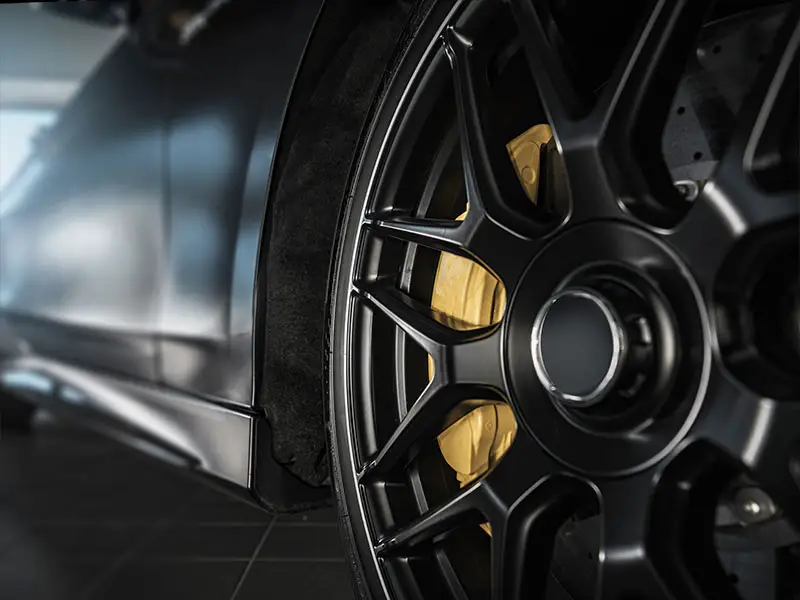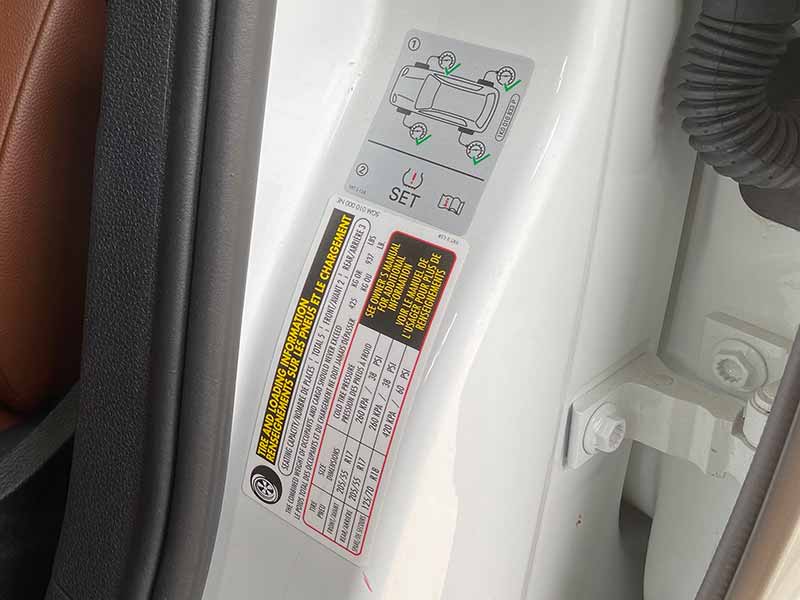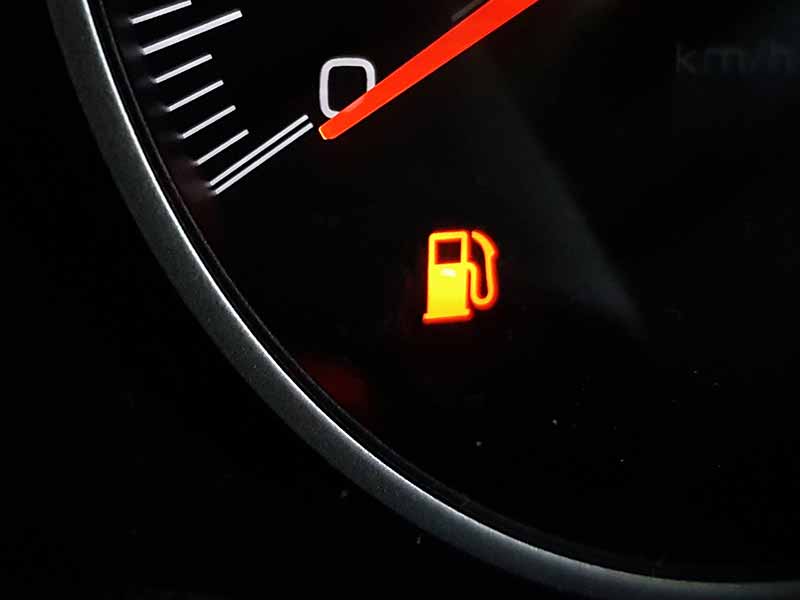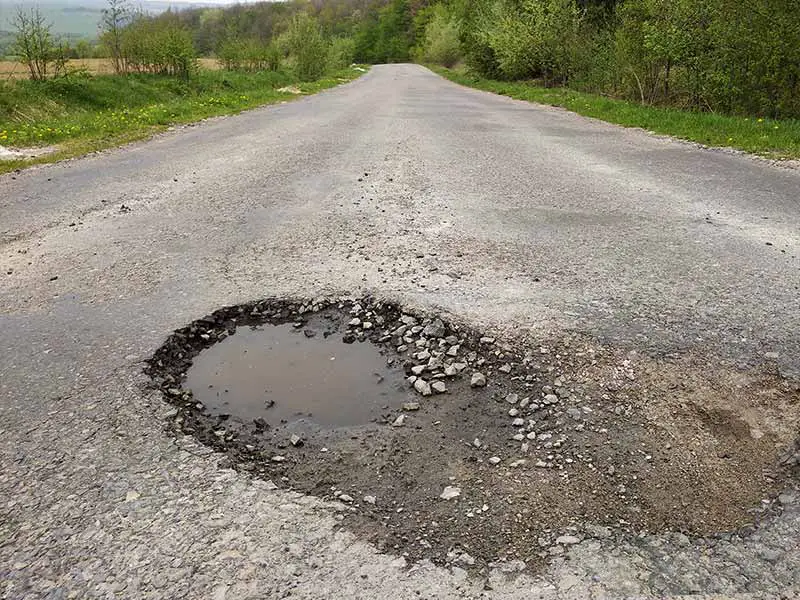Modern cars and trucks have been moving toward lower-profile tires and larger wheels that make for a much harsher ride.
Also, since higher pressure in tires improves fuel economy, more manufacturers recommend higher pressure due to the improved mileage. The combination of short sidewalls and high air pressure means you’ll feel every bump while driving.
Best Tire Pressure For Ride Quality
For passenger cars, a tire pressure of 30-35 PSI (pounds per square inch) is usually recommended for optimal ride quality. However, if you have a heavier vehicle or if you’re carrying a heavy load, you may need to increase the tire pressure slightly to maintain the same ride quality.
In this article, we’ll explore the best tire pressure for ride quality and explain how it can impact your vehicle’s handling, fuel efficiency, and overall performance.
Let’s take a closer look.

Does Lower Tire Pressure Give A Smoother Ride?
One of the most common myths about tire pressure is that lower tire pressure gives a smoother ride. While it’s true that underinflated tires may feel softer and absorb more shock from bumps and potholes, they can actually cause more harm than good in the long run.
When tire pressure is too low, it can cause the tire’s sidewalls to flex excessively, leading to increased heat and wear on the tire. This can ultimately result in a blowout or premature tire failure, which can be dangerous.
On the other hand, properly inflated tires can also provide a smooth ride. In fact, having the correct tire pressure can help absorb shock from bumps and potholes while also ensuring maximum traction and fuel efficiency. Plus, it can also prolong the life of your tires by reducing wear and tear.
To find the optimal tire pressure for your vehicle, it’s important to refer to the manufacturer’s recommendations listed in the owner’s manual or on the tire information sticker on the driver’s door jamb. And remember, even a small deviation from the recommended tire pressure can affect the ride quality and safety of your vehicle.

Driving With Low Tire Pressure
Driving with low tire pressure can be a risky business. When your tires are underinflated, it can cause a host of problems, including decreased fuel efficiency, reduced handling and stability, and even tire failure.
Low Tire Pressure Fuel Economy
When your tires are low on air, they create more rolling resistance, which means your vehicle needs more power to move forward. This additional power requirement can decrease fuel efficiency and higher gas costs over time.
Studies have shown that driving with underinflated tires by just a few pounds per square inch (PSI) can decrease fuel economy by up to a 3% decrease. Over time, that can really add up and put a dent in your wallet.

Low Tire Pressure Wear Pattern
When your tires are underinflated, they can wear more on the edges of the tread, which can shorten tire life.
This wear pattern is because underinflated tires tend to bulge outward, causing the edges of the tread to come in contact with the road more than the center of the tread. This uneven wear can cause your tires to wear out faster and require replacement sooner than they would have otherwise.
Low Tire Pressure Handling & Performance
When your tires are underinflated, it can cause your vehicle to feel sluggish and unresponsive, especially when accelerating or cornering. It can also cause your vehicle to feel less stable and more prone to swaying or wandering on the road.
In addition to decreased handling and stability, low tire pressure can also impact your vehicle’s braking performance. Underinflated tires can increase your stopping distance, making it more difficult to stop in emergencies quickly.
What Makes A Car Ride Smooth?
There are a few key factors that can contribute to a smooth and comfortable ride:
Tires
Having the right tires can make a big difference. Tires designed for comfort, such as touring or grand touring tires, can help absorb road imperfections and provide a smoother ride. It’s also important to ensure that your tires are correctly inflated to the manufacturer’s recommended level, as underinflated or overinflated tires can negatively impact ride quality.
Suspension
Having a well-maintained suspension system is crucial for a smooth ride. Worn-out shocks or struts can cause your vehicle to bounce or feel unstable on the road, while properly functioning suspension components can help absorb bumps and provide a more comfortable ride.
Weight
Vehicle weight distribution can impact ride quality. Overloading your vehicle or placing heavy items in certain areas can cause your car or truck to ride unevenly and feel less stable on the road.
Road Surface
Driving defensively and avoiding road hazards when possible is important to ensure a comfortable and safe driving experience. Road conditions play a big role in ride quality. Smooth, well-maintained roads will provide a smoother ride than bumpy or pothole-ridden roads.

Can I Put Larger Tires On My Car Or Truck?
An excellent way to significantly improve ride quality is by installing tires with more sidewall height. Sidewall height is also known as aspect ratio.
A common method of increasing the aspect ratio of your tires is by purchasing wheels that are smaller and tires that are larger. The increased aspect ratio of the tires makes up for the difference in the smaller diameter of the wheels.
The reverse of this, called plus sizing, is often done for those wanting low-profile tires and larger wheels.
Purchasing a new set of wheels and tires can be expensive. It is possible only to buy tires with a slightly taller sidewall to increase ride comfort, but this will alter the wheel assembly’s rolling diameter as the vehicle manufacturer intended.
At a minimum, changing the rolling diameter will affect the accuracy of your speedometer. It can also negatively affect traction control and all-wheel drive systems programmed with the assumption of a specific rolling diameter.
That said, minor changes will have a negligible impact. Not long ago, I installed tires will taller sidewalls on my previous personal car without changing the wheels and had no noticeable problems.
Resources
Below are some links you may find helpful when learning about tires
- Can psi adjustments fix handling and ride problems? – Tire Review
- What happens if I underinflate my tires? – Your Mechanic
Final Thoughts
By following these guidelines and regularly checking your tire pressure, you can make sure that your car or truck has a smooth and comfortable ride.
Not only will you enjoy a better driving experience, but you’ll also prolong the life of your tires, improve your vehicle’s fuel efficiency, and enhance its overall performance.
Good luck and happy motoring.






